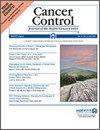Survival Dynamics in Advanced Ovarian Cancer: R2 Resection Versus No-Surgery Paths Explored
IF 2.5
4区 医学
Q3 ONCOLOGY
引用次数: 0
Abstract
BackgroundCytoreductive surgery is critical for optimal tumor clearance in advanced epithelial ovarian cancer (EOC). Despite best efforts, some patients may experience R2 (>1 cm) resection, while others may not undergo surgery at all. We aimed to compare outcomes between advanced EOC patients undergoing R2 resection and those who had no surgery.MethodsRetrospective data from 51 patients with R2 resection were compared to 122 patients with no surgery between January 2015 and December 2019 at a UK tertiary referral centre. Progression-free survival (PFS) and overall survival (OS) were the study endpoints. Principal Component Analysis and Term Frequency – Inverse Document Frequency scores were utilized for data discrimination and prediction of R>2 cm from computed tomography pre-operative reports, respectively.ResultsNo statistical significance was observed, except for age (73 vs 67 years in the no- surgery vs R2 group, P: .001). Principal Components explained 34% of data variances. Reasons for no surgery included age, co-morbidities, patient preference, refractory disease, patient deterioration or disease progression, and absence of measurable intra- abdominal disease). The median PFS and OS were 12 and 14 months for no-surgery, vs 14 and 26 months for R2 ( P: .138 and P: .001, respectively). Serous histology and performance status independently predicted PFS in both no-surgery and R2 cohorts. In the no-surgery cohort, serous histology independently predicted OS, while in the R2 cohorts, both serous histology and adjuvant chemotherapy were independent prognostic features for OS. The bi-grams “abdominopelvic ascites” and “solid omental” were amongst those best discriminating between R>2 cm and R1-2 cm.ConclusionsR2 resection and no-surgery cohorts displayed unfavourable prognosis with a notable degree of uniformity. When cytoreduction results in suboptimal results, the survival benefit may still be higher compared to those who underwent no surgery.晚期卵巢癌的生存动态:R2切除与不手术路径探讨
背景膀胱切除手术是晚期上皮性卵巢癌(EOC)达到最佳肿瘤清除率的关键。尽管尽了最大努力,但有些患者可能会接受 R2(>1 厘米)切除术,而有些患者则可能根本不接受手术。我们旨在比较接受R2切除术的晚期EOC患者与未接受手术的患者的治疗效果。方法比较了英国一家三级转诊中心2015年1月至2019年12月期间51名接受R2切除术的患者与122名未接受手术的患者的回顾性数据。研究终点为无进展生存期(PFS)和总生存期(OS)。主成分分析和术语频率-反向文档频率评分分别用于数据判别和预测计算机断层扫描术前报告中的R>2厘米。结果除年龄外,未观察到其他统计学意义(无手术组与R2组的年龄分别为73岁与67岁,P:.001)。主成分解释了 34% 的数据差异。不手术的原因包括年龄、并发症、患者偏好、难治性疾病、患者病情恶化或疾病进展,以及腹腔内没有可测量的疾病)。不手术的中位 PFS 和 OS 分别为 12 个月和 14 个月,而 R2 为 14 个月和 26 个月(P:.138 和 P:.001)。浆液组织学和表现状态可独立预测不手术组和 R2 组的 PFS。在不手术队列中,浆液性组织学可独立预测OS,而在R2队列中,浆液性组织学和辅助化疗都是OS的独立预后特征。"腹盆腔腹水 "和 "实性网膜 "是区分 R>2 cm 和 R1-2 cm 的最佳指标之一。当细胞减灭术的效果不理想时,与不进行手术的患者相比,其生存获益可能仍然更高。
本文章由计算机程序翻译,如有差异,请以英文原文为准。
求助全文
约1分钟内获得全文
求助全文
来源期刊

Cancer Control
ONCOLOGY-
CiteScore
3.80
自引率
0.00%
发文量
148
审稿时长
>12 weeks
期刊介绍:
Cancer Control is a JCR-ranked, peer-reviewed open access journal whose mission is to advance the prevention, detection, diagnosis, treatment, and palliative care of cancer by enabling researchers, doctors, policymakers, and other healthcare professionals to freely share research along the cancer control continuum. Our vision is a world where gold-standard cancer care is the norm, not the exception.
 求助内容:
求助内容: 应助结果提醒方式:
应助结果提醒方式:


